Overview of the 7 Days Tour from Casablanca:
Welcome to an unforgettable journey with Morocco Tours Operator, where your 7 days tour from Casablanca will unfold the scenic beauty and cultural richness of Morocco.
Read MoreEmbark on a tour itinerary that is meticulously crafted to ensure that your 7 days are filled with enchanting experiences. From the bustling streets of Casablanca, your tour will take you through historic cities, majestic landscapes, and provide you with authentic local encounters. The 7 days tour isn’t just a timeframe; it’s a canvas of memories waiting to be painted. As you embark on your tour from Casablanca each day, you’ll uncover the secrets of ancient medinas and marvel at the wonders this country has to offer.
Whether you’re looking for adventure, relaxation, or cultural immersion, our 7 days tour caters to every traveler’s desire. Discover the magic of Morocco where every day tour is an adventure in its own right. So, whether you’re a first-timer or a seasoned traveler, get ready for an unparalleled experience with our professionally guided 7 days tour, where every detail is taken care of for your enjoyment and comfort.
Let the journey of a lifetime await you with every *tour from Casablanca*! Embrace the call of the unknown and the excitement of exploration on this one-of-a-kind 7-day adventure that promises to leave you with stories for a lifetime.
This 7 days tour from Casablanca will take you on an unforgettable trip to explore the best of Morocco. Starting from Casablanca, we will journey to Marrakech, Ait Benhaddou, and Dades Gorges, before continuing to the Merzouga desert for an incredible camel trek and camping experience. In addition, we will explore the cultural cities of Fes and Rabat, each offering their own unique highlights.
Our tour from Casablanca will include visits to some of Morocco’s most famous sites, including the Kasbahs, medinas, and souks. We will stay at comfortable hotels and riads along the way, with prices varying depending on the operator and group size. Our itinerary is suitable for adults and families, with meals and fuel included in the price.
The tour will start and end in Casablanca, with options for air tours available. From the northern city of Fes to the stunning Atlas Mountains, this tour will showcase the best that Morocco has to offer.
Highlights of the 7 Days Tour from Casablanca:
Welcome to an unforgettable journey where you will immerse yourself in the vibrant culture and stunning landscapes that define Morocco.
Read MoreOur meticulously planned 7-day Morocco tour from Casablanca encompasses the very essence of Moroccan splendor. Marvel at the seamless blend of ancient and modern in Casablanca before embarking on tours that weave through bustling souks and tranquil desert oases.
The grandeur of imperial cities awaits, revealing centuries of history within their walls. Engage intimately with the spirited heart of Morocco as each day unfolds with new adventures. The allure of the desert beckons, promising an iconic Morocco desert tour that captures the spirit of adventure amidst the rolling dunes.
With desert tours expertly crafted to showcase the magic of the Sahara, you’ll ride camels under starlit skies and wake to the serene beauty of desert sunrises. Whether you’re exploring historical wonders or basking in the stillness of the desert, our 7 days Morocco itinerary brings together the best of desert and city experiences, affirming our commitment as a Morocco Tours Operator that honors the rich tapestry of Moroccan traditions and natural wonders. Adventure calls—are you ready to answer?
- Marrakech the red city.
- Ait Ben haddou Kasbah.
- Rose valley.
- Todgha canyons.
- Camel ride Merzouga.
- Camping at Erg Chebbi dunes.
- Fes, the cultural city.
- Ouarzazate Atlas studio.
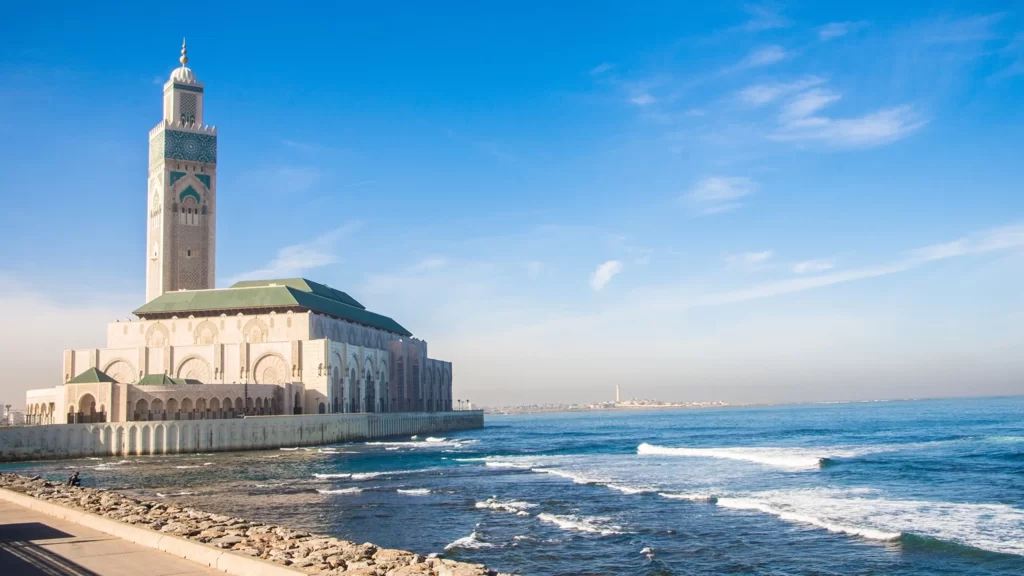
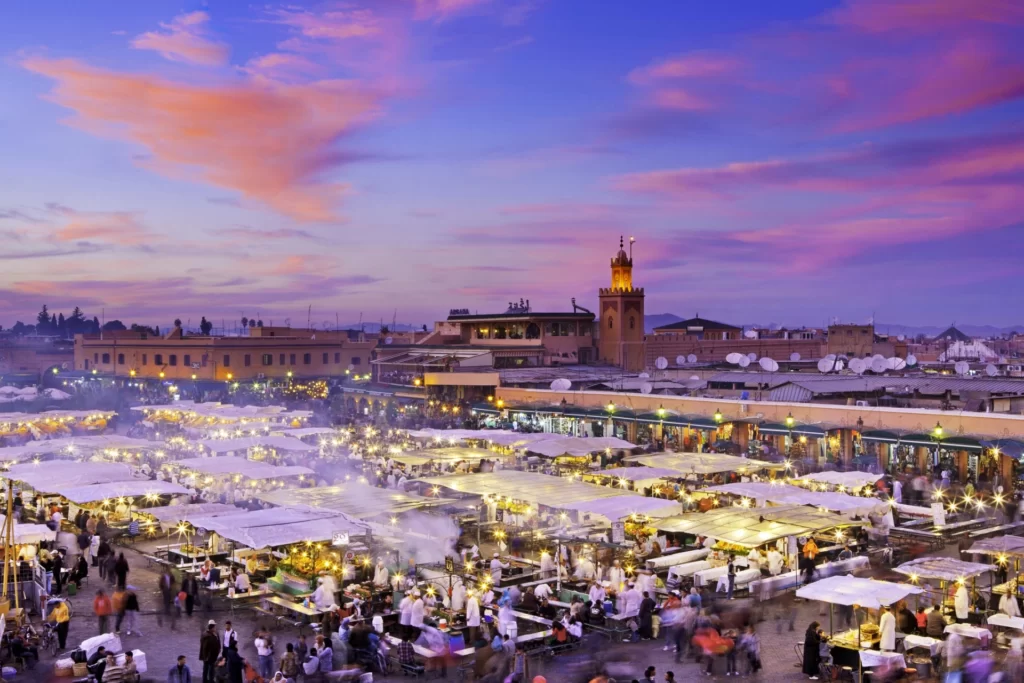
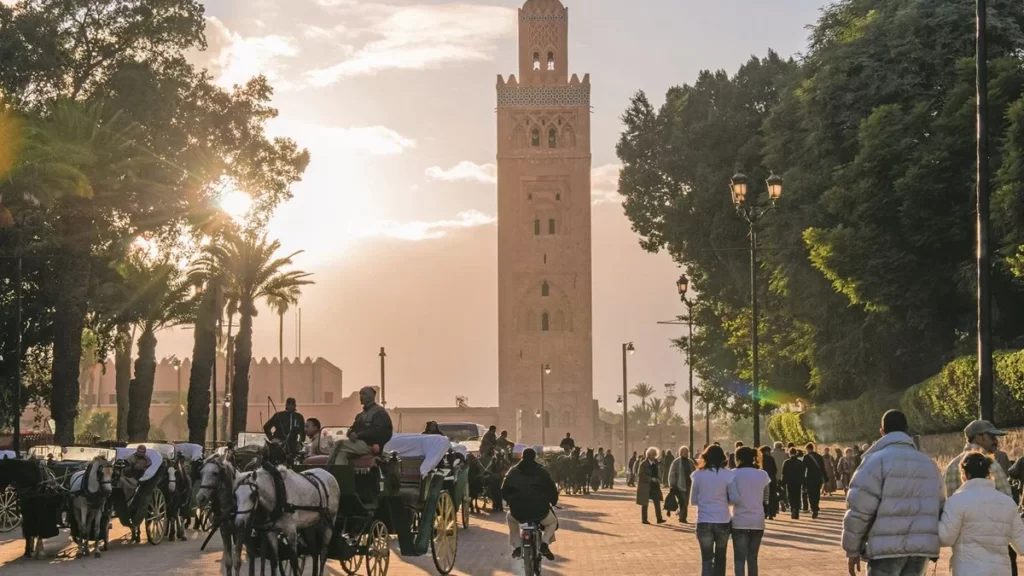


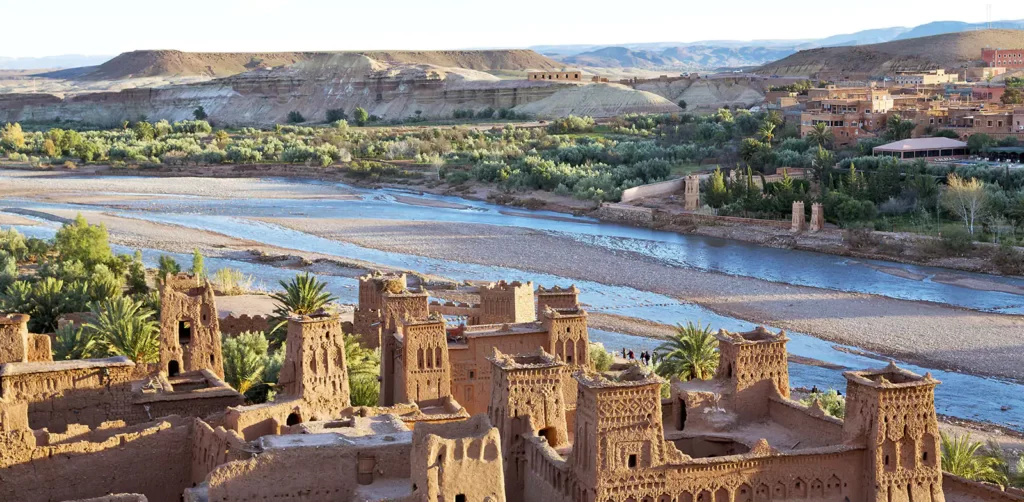
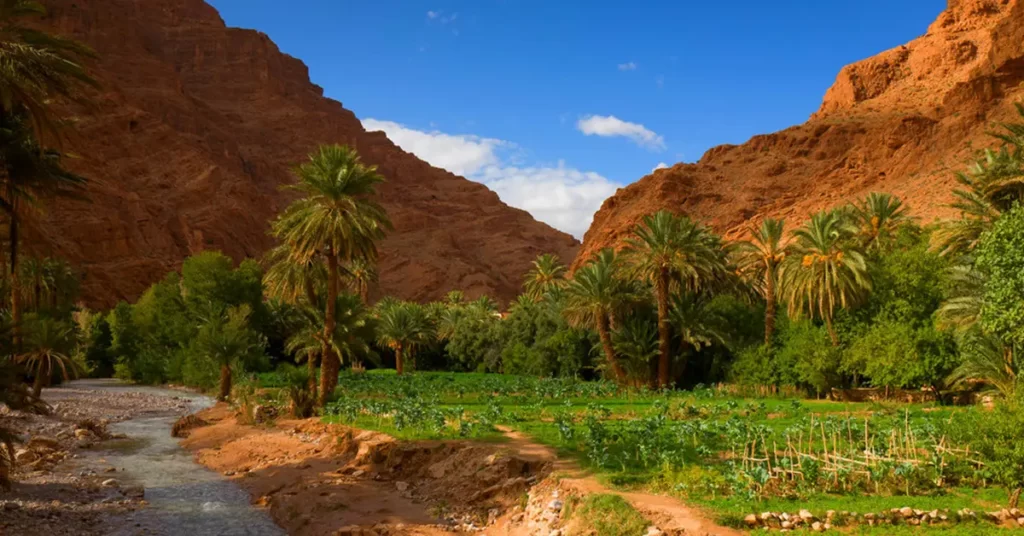
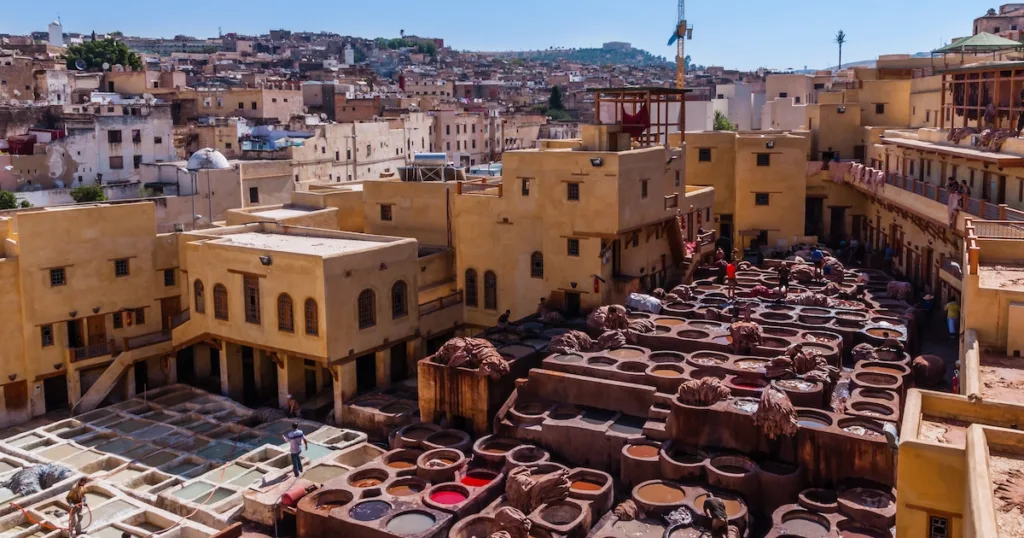
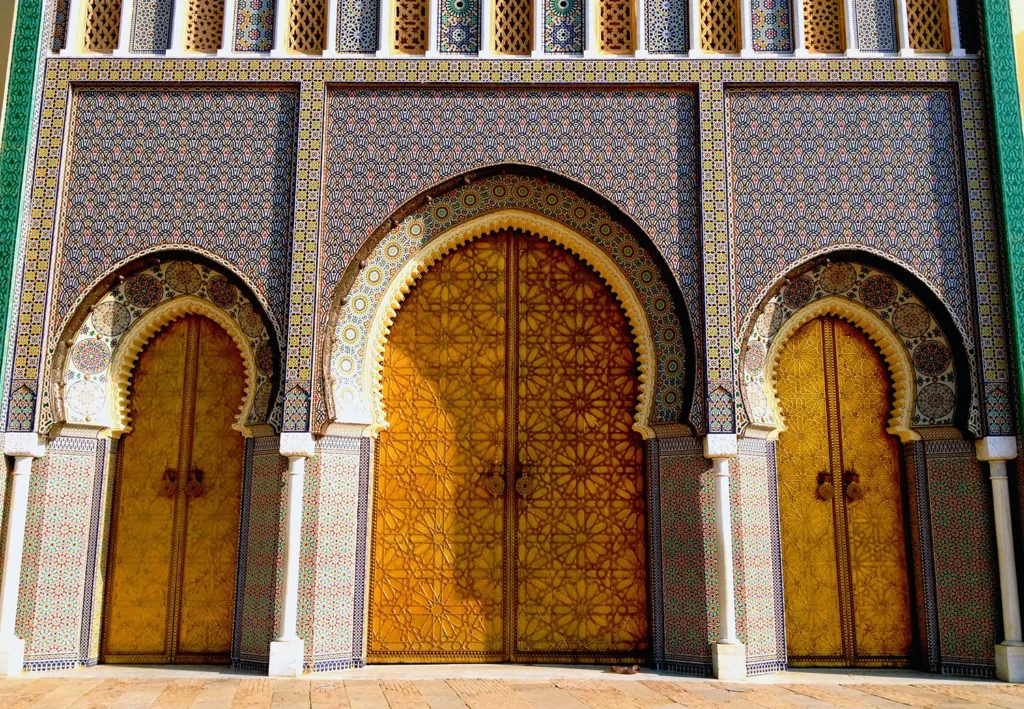
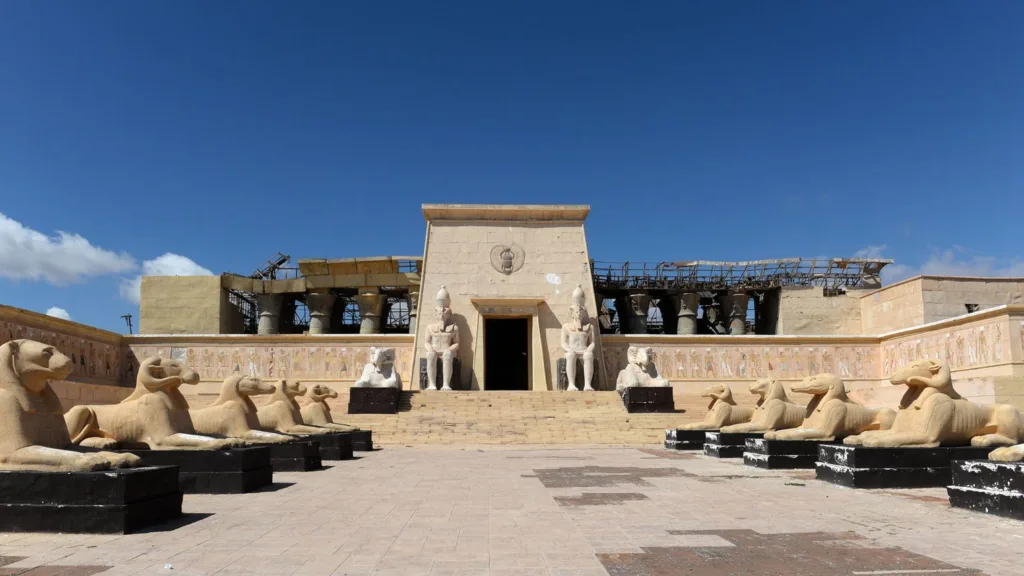
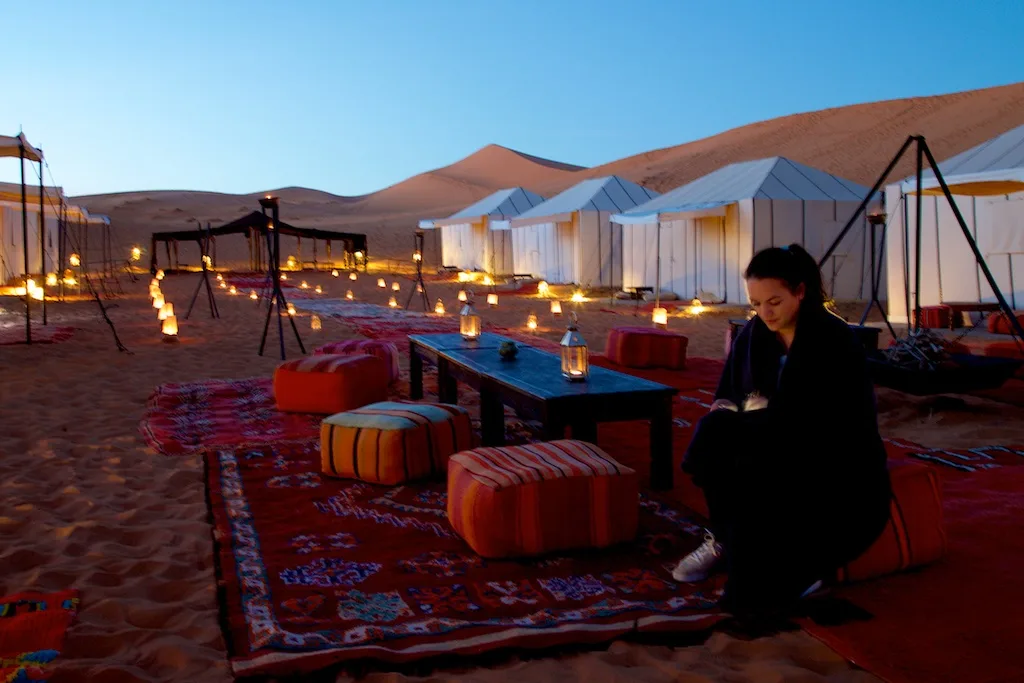
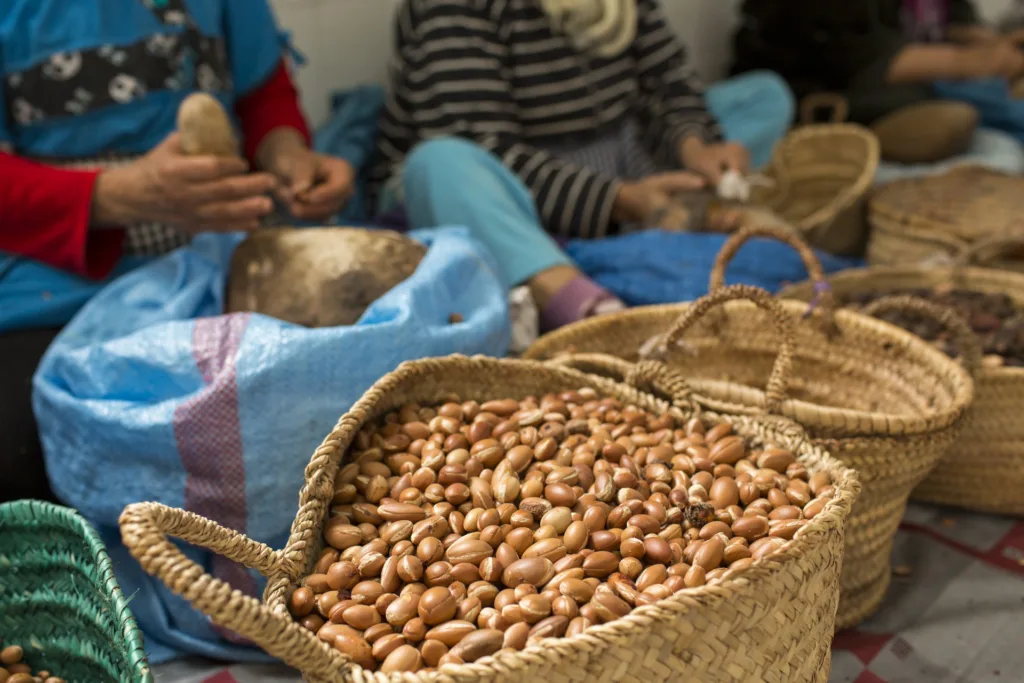
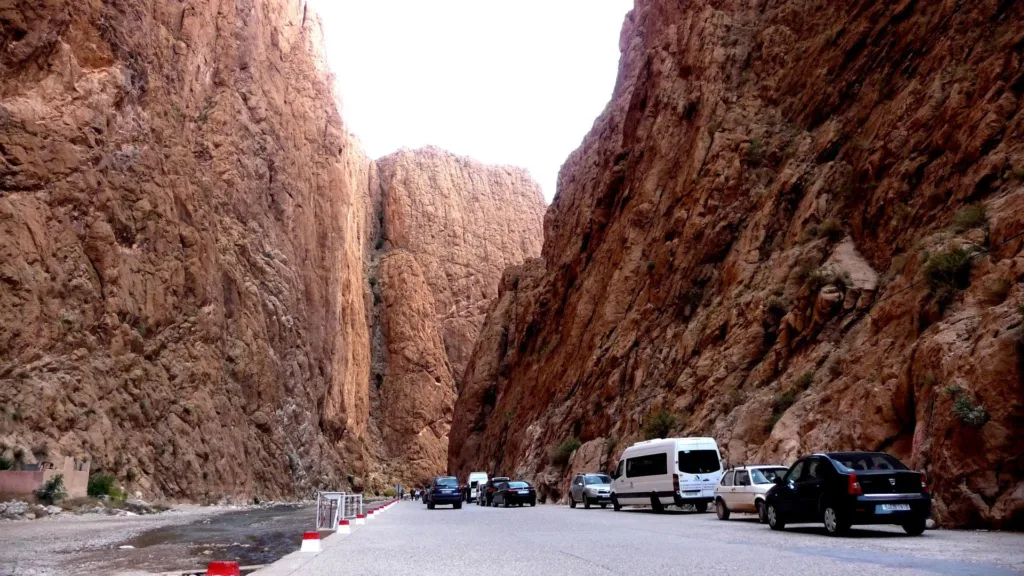
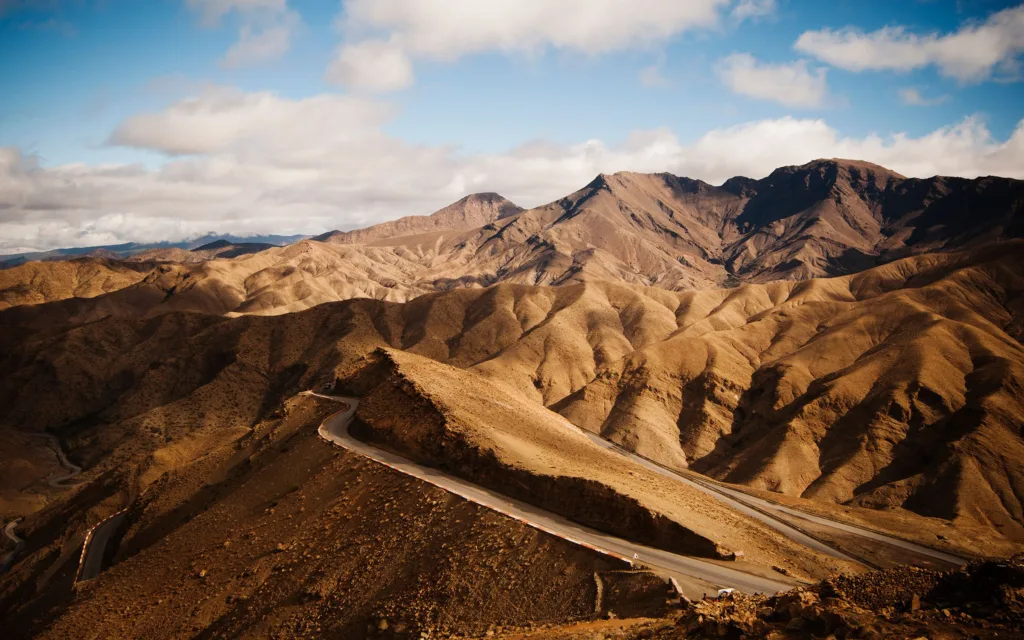
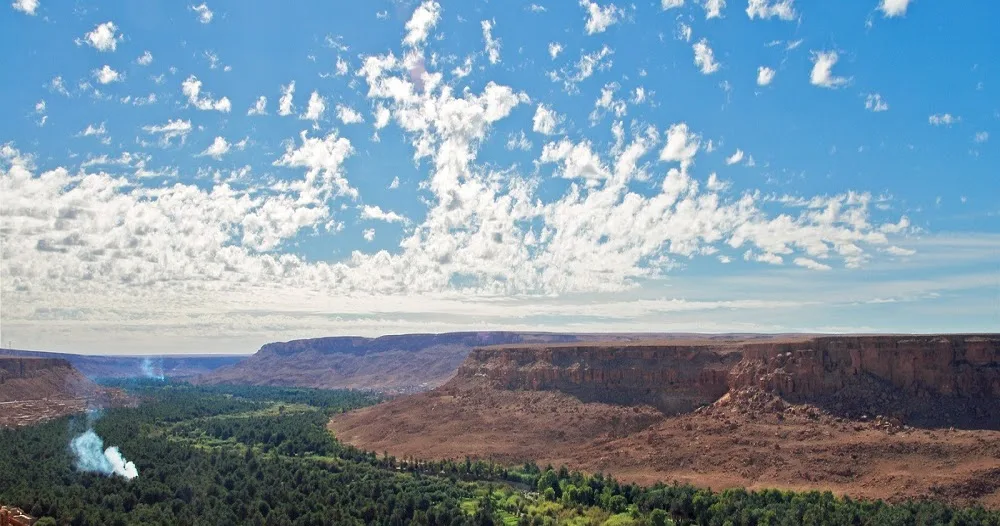
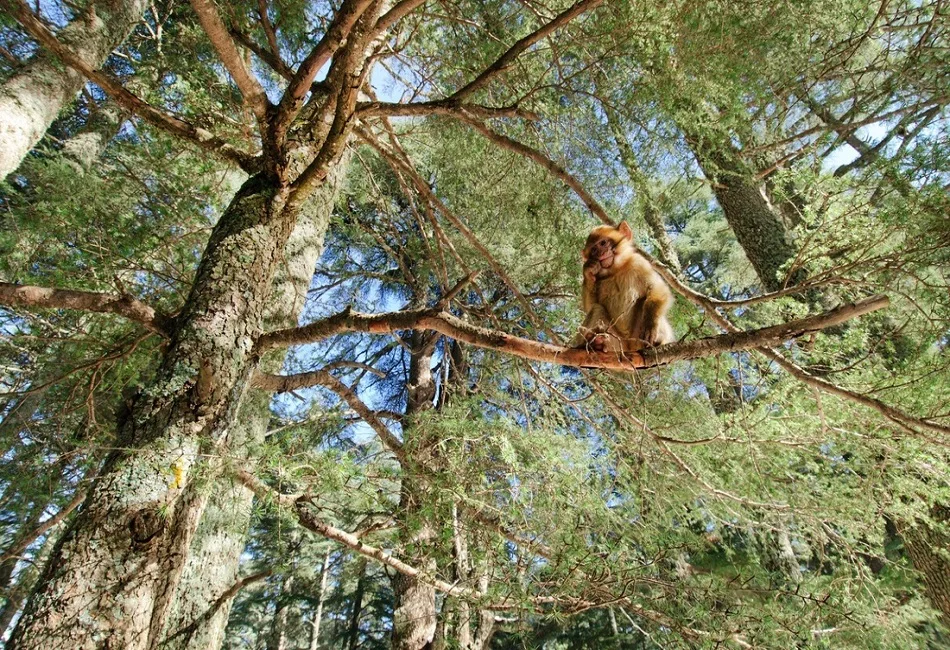
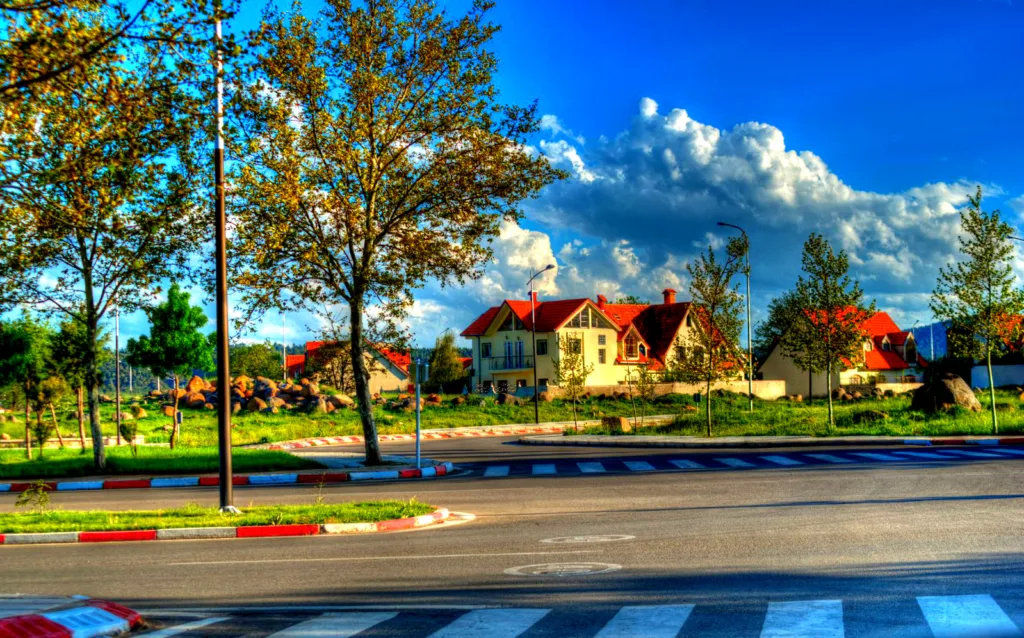
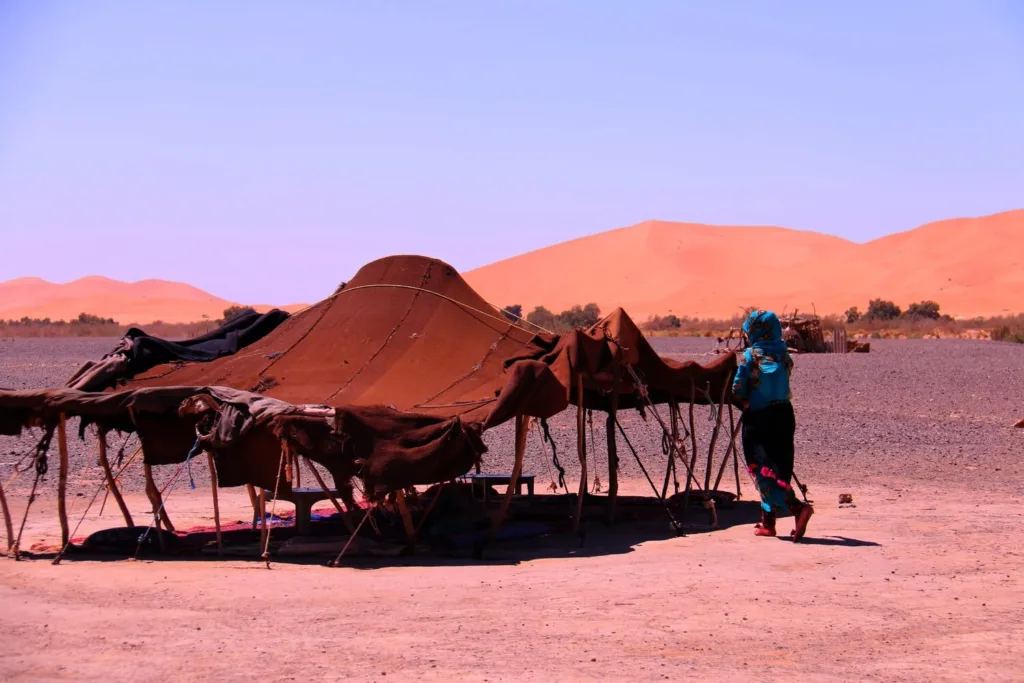
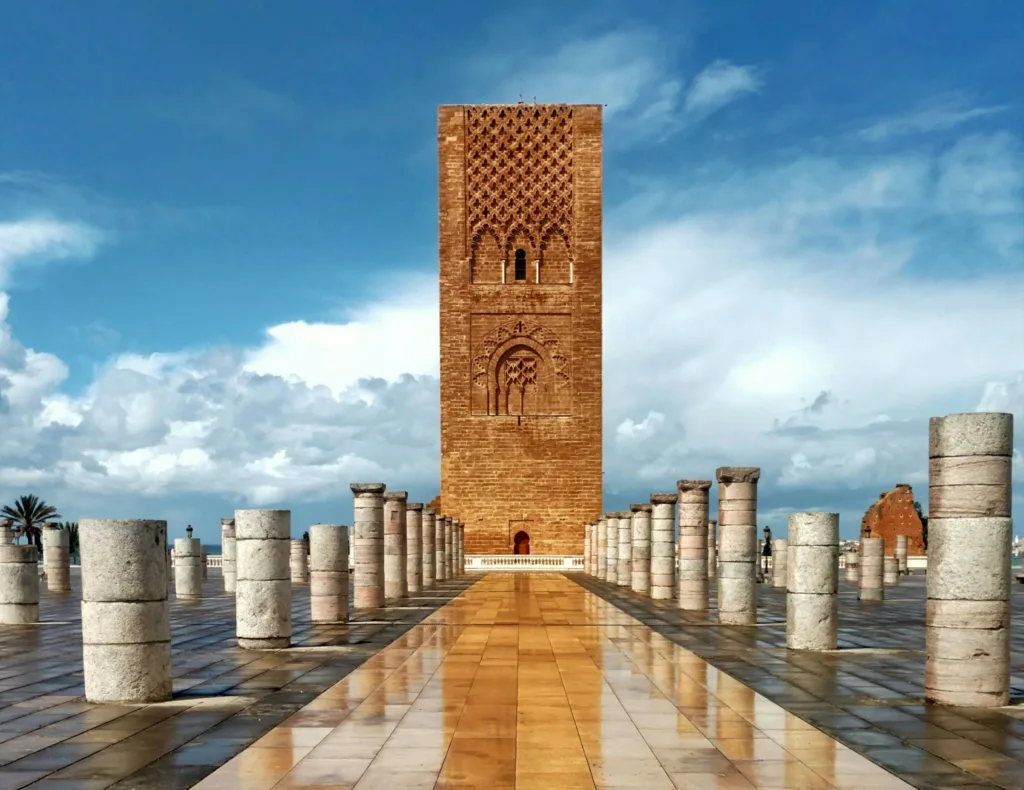
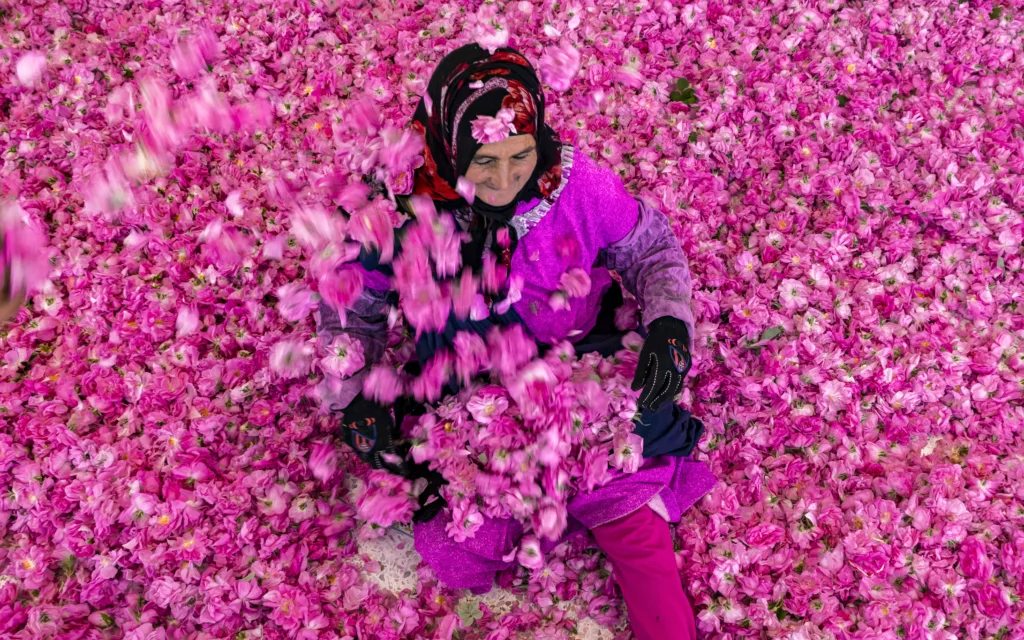
Detailed 7 Days Tour Itinerary From Casablanca:
Embark on a journey of a lifetime with Morocco Tours Operator as we unveil a meticulously planned 7 days tour itinerary that will take you through the mesmerizing landscapes and cultural tapestry of Morocco.
Read MoreYour adventure begins in Casablanca, where the blend of tradition and modernity sets the stage for your unforgettable 7-day adventure. Envision spending your days touring ancient cities, each day unfolding new mysteries and delights.
The days desert tour segment is a highlight, whisking you away to golden dunes and starlit skies. Throughout these 7 days, you’ll find each itinerary brimming with opportunities to immerse yourself in the vibrant local scenes, whether it’s in the bustling souks or tranquil oases. Our expertly curated tour itineraries ensure that your 7 days are packed with a perfect balance of exploration, leisure, and discovery.
From the first day to the final day, expect an eclectic mix of sights, from the majesty of the Sahara to the historic marvels of imperial cities. So, mark your calendars for an extraordinary 7 days tour where every tour, every itineray, every single day leads to a new adventure. Revel in the magic of Morocco with us, your trusted Morocco Tours Operator, as we guide you every step of the way.
Day 1: Trip Itinerary from Casablanca to Marrakech (242 km):
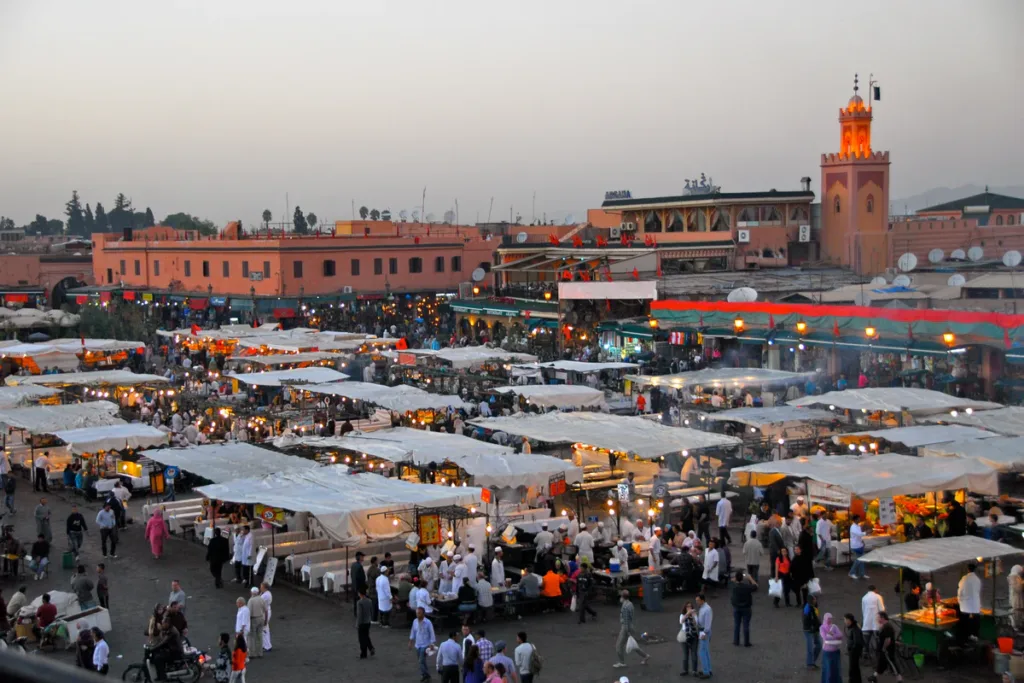
On our first day, we will start our 7 days tour from casablanca at Casablanca. Thus, we will take you to visit the mosque of Hassan II, the only mosque that none Muslims can enter. Then, we will take you on the highway to Marrakech, overnight in a hotel.
Accommodation:
- Standard: Riad Tassili o similar.
- Superior: Riad Touda o similar.
- Breakfast included.
Day 2: Marrakech Tour:

Our second day of Morocco 7 days tour from Casablanca will be a guided tour at Marrakech. Therefore, we will take you to visit the gardens of Menara and Majorelle. Then, we will discover the mosque of Kotobia and the square of Jamaa El Fna. Next, we will visit the kings’ palace and the Saadian tombs. Furthermore, we will take you to visit the art and galley of house photography and Bahia palace. Not to mention Souk Semmarine and the Jewish quarter, Mellah.
Accommodation:
- Standard: Riad Tassili o similar.
- Superior: Riad Touda o similar.
- Breakfast included.
Day 3: Tour Itinerary from Marrakech to Boumaln Dades (325 km):
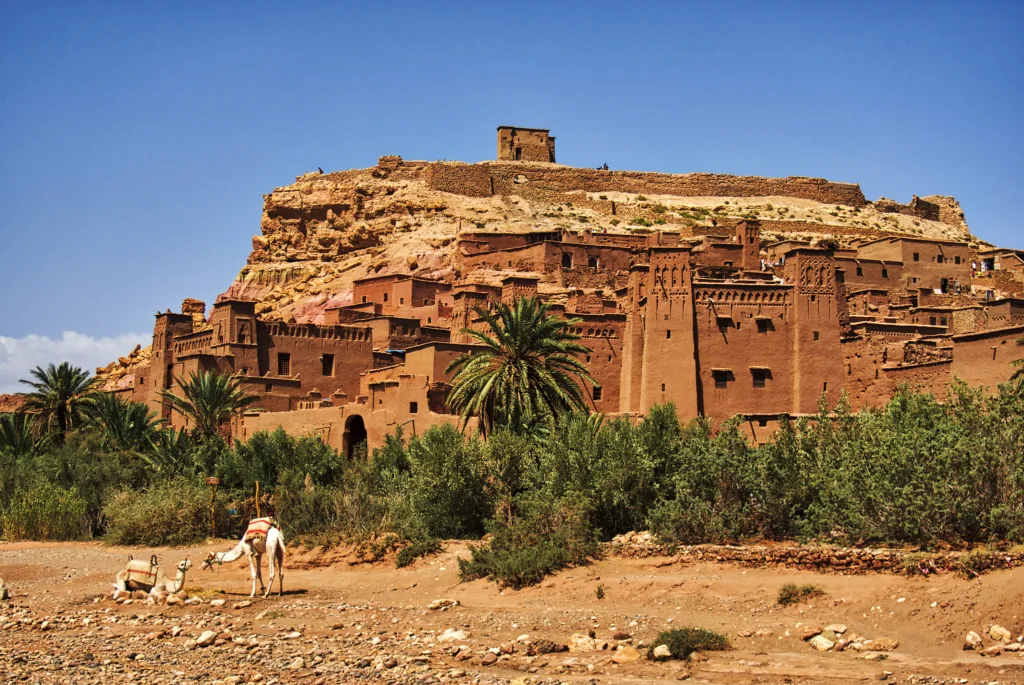
The third day of our 7 days tour from casablanca We will drive to Dades Gorges Through The High Atlas Mountains. Firstly, we will visit the argan oil cooperative and the highest point of the Atlas mountains of 2260m. Then, we will take you to discover the Kasbah of Ait Benhaddou, the Berber fortress that was built by the Glaoui family. Also, parts of many movies like Lawrence of Arabia and Gladiator were shot there.
Read MoreAfter that, we will drive to Ouarzazate, there are many movies studios, we will visit one of them before we leave to drive through Skoura. Later, we will arrive in the rose valley and then to Dades. There, we will stop at the monkey toes and the curves of Tisdrine. Eventually, we will drive you to a hotel in the mountains.
Accommodation:
- Standard: Hotel Babylon o similar.
- Superior: Hotel Xaluca o similar.
- Breakfast and Dinner included.
Day 4: Dades to Merzouga Trip (248 km):
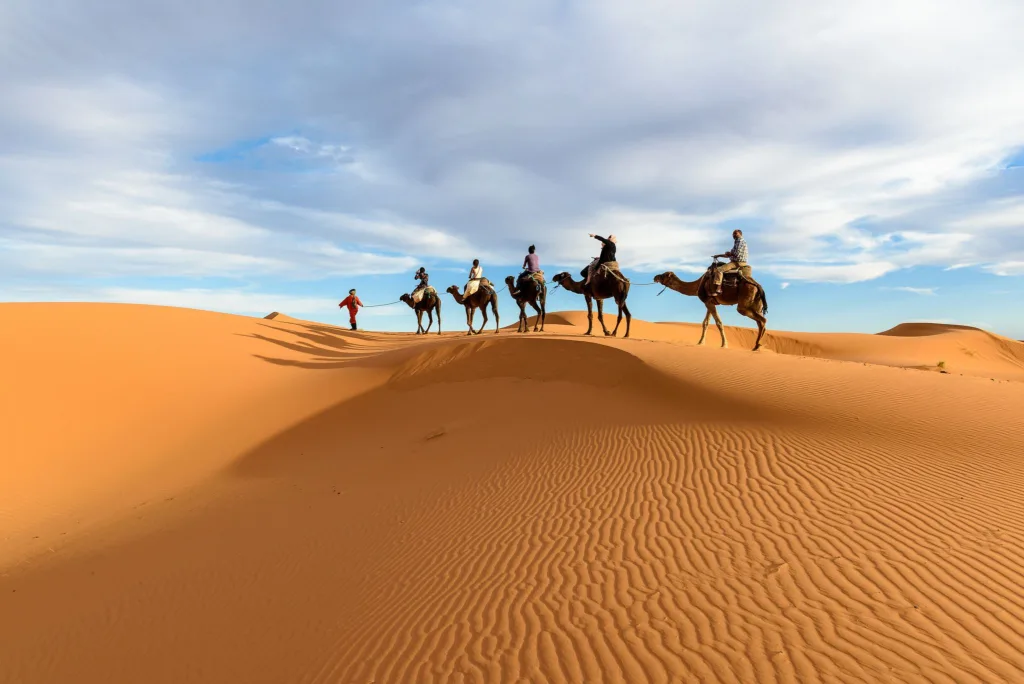
This is the day to do Camel trekking in Merzouga and camping in Berber tents is the highlight of our Morocco 7 days tour from Casablanca. Before, we will visit the canyons of Todgha Gorges, about 300m high, and water passing through the rocks. Then, we will discover one of the old systems of irrigation that people used to water oases. After that, we will drive through Erfoud, the city of fossils, and date fruits.
Read MoreLater, we will arrive at Erg Chebbi, about 152m/500 feet. We will stop at a panoramic view before we leave for the center of Merzouga. There, you can leave your luggage and take only what you need in the camp. Then, we will take you on the camel trekking to the Berber camp. Before, we will stop on the dunes to watch the sunset. Our team of Berbers will play music in the tents after dinner. Next, you can walk up the dunes to watch the stars and the Milkyway.
Accommodation:
- Standard: Jannat Luxury Camp o similar.
- Superior: Jannat Luxury Camp o similar.
- Breakfast and Dinner included.
Day 5: Merzouga to Fes Tour (468 km):

After breakfast in the camp, we will take you back to Merzouga on the camel. Then, we will drive again through Erfoud and Ziz valley, the source of Dates fruits. After that, we will drive at the high atlas mountains passing by Errachidia dam. Next, we will pass by Midelt, the city of apples.
Read MoreAfter that, we will visit the cedar forest of Azrou, our stop will be a visit to the monkeys, one of the animals that are still living in the atlas. Thereafter, we will drive to Ifrane city, the cleanest big town in Morocco. There, we will visit the statue of the atlas lion that was curved by a German prisoner to gain his freedom.
Eventually, we will arrive at Fes El Bali to finish the 5th day of our 7 days tour from casablanca.
Accommodation:
- Standard: Riad Sara Fes o similar.
- Superior: Palais Houyam o similar.
- Breakfast included.
Day 6: Fes Tour:

Our Morocco itinerary 7 days tour from Casablanca that includes a Fes guided tour. That is to say, one of Fes local guides will come to your accommodation in the morning to go with you and explore the cultural Fes. To start with, you will visit the King’s palace and the Jewish quarter, El Mellah. Then, we will visit a Borj, a place on top of Fes to have an overview of the city.
Read MoreNext, we will take you to the blue gate, the main gate to the Medina. There, there are two main streets, you will select one of them when going and one when coming back. These two streets are about the market or souk of Fes. Also, on one of the streets, there is the university of al-Qarawiyyin, the oldest existing. Furthermore, there are tanneries, where they make the leather. Not to mention, we will also visit the ceramics in Fes, an outstanding art from the people of Fes.
If you are interested, we can take you to have a Hammam, a hot Moroccan sona, or also a Massage to enjoy the rest of the day.
Accommodation:
- Standard: Riad Sara Fes o similar.
- Superior: Palais Houyam o similar.
- Breakfast included.
Day 7: Fes to Casablanca (295 km):

This will be the end of our 7 days tour from casablanca. But first, we will visit Rabat, the actual capital city of Morocco. There, we will visit the Hassan Tower mosque and Les Oudayas, a Kasbah that is protected by the Unesco Heritage. In the end, we will take you to the airport or to your accommodation in Casablanca.
Best 7 days tour from Casablanca to imperial cities on the map:
Airport/accommodation in Casablanca
8 am
7 days/ 6 nights
Casablanca/ Airport
English speakers drivers
Includes:
- Transport in a private air-conditioned 4×4(Toyota Prado Tx) or Mini Bus with fuel.
- Pick-up from and drop-off at your riad or hotel, and airport transfers.
- English speaking driver/guide.
- Private room or tent with private bathroom.
- Breakfast.
- Dinner.
- Camel for each in the desert.
Excludes:
- Lunches, Drinks.
- Airplane Ticket.
- Monument Fees.
A Look into Our Customers Tours Experiences




















Ask For Prices:
Inform Your Friends About This Trip To Morocco.
Here Are Some Related Morocco Tours.
From:
100
€
Marrakech
Embark on an Unforgettable Morocco Student Tour: Discover Marrakech and Beyond Welcome to a world where adventure, education, and cultural immersion blend seamlessly to create the ultimate educational experience – Morocco Student
From:
149
€
Fes
3 Days
3 days tour from Fes to Merzouga overview: If you are looking for a Morocco 3 days tour from Fes to Merzouga Sahara desert, this is surely the right path
From:
645
€
Casablanca
8 Days
8 days tour from Casablanca overview: Morocco Tours Operator customized tour itinerary for 8 days tour from Casablanca. Join us on this trip to visit the most visited and the
From:
729
€
Tangier
9 Days
9 days tour from Tangier overview: You will learn about the most popular tourist destinations and attractions in Morocco on this 9 days tour from Tangier. The journey begins in
From:
259
€
Casablanca
5 Days
5 days tour from Casablanca overview: Our tour itinerary of 5 days tour from Casablanca and ends at Marrakech. On our way, we will discover the best and the most
From:
729
€
Casablanca
9 Days
9 days tour from Casablanca overview: You will explore the most beautiful destinations in Morocco on this 9 days tour from Casablanca. We will start the trip in the north
Planning Your Trip: 7 Days Tour Accommodations in Casablanca:
As you embark on your 7 days desert adventure, the vibrant city of Casablanca offers a plethora of hotel options to kick-start your journey. Whether you’re looking for luxury or modest accommodations, you’ll find a hotel to rest and refresh after each exhilarating day trip. On this dream 7 days tour, each one of your stays is carefully selected to enhance your experience. One can expect top-notch service and comfort, ensuring that you’re well-rested for the days of discovery ahead.
Your Casablanca hotel serves as the starting point for your trips, where the melding of culture and modernity greet you every morning. This 7-day itinerary is tailored to offer you a seamless blend of relaxation and exploration. The day’s excursions will introduce you to the wonders of Morocco, while your hotel in Casablanca provides the perfect oasis to contemplate the day’s journey. Trust Morocco Tours Operator to ensure that every aspect of your trip, from the bustling days in the desert to the tranquil evenings in Casablanca, is nothing short of remarkable.
Day-to-Day Itinerary from Casablanca: Your 7 Days Tour Journey:
Welcome to an enthralling 7-day adventure with Morocco Tours Operator, where every day unveils a chapter of Morocco’s tapestry of culture and landscapes. Your day-to-day itinerary from Casablanca kicks off in this vibrant city, where architectural marvels blend with the buzz of daily life. As your first tour day unfolds, you’ll be immersed in the city’s charm before embarking on your Morocco tours, designed to reveal the country’s heart. In the following days, you’ll experience a mix of historical grandeur and the serenity of the Morocco desert, a highlight of our meticulously handcrafted trip. Your tour will then wind through the ethereal beauty of Moroccan landscapes, each day accentuating the allure of your journey. Worry not about accommodations; our 7 Days Tour includes carefully selected stays to ensure your comfort each day. Moving from Casablanca to the myriad wonders this trip has to offer, each tour day promises a blend of discovery and relaxation. By day, we’ll uncover majestic cities and at dusk, retreat under the desert stars. Trust Morocco Tours Operator to guide you on this quintessential Morocco tour, where every day contributes to a lifetime of memories. Let’s embark on this trip together, your escapades await from day one!
Explore Rabat and the Kasbah During Your Tour from Casablanca:
Embark on a tour from Casablanca and witness the captivating elegance of Rabat, Morocco’s political and administrative capital. Your 7-day adventure with Morocco Tours Operator begins in the bustling city of Casablanca, leading to a day overflowing with discovery and charm. As you journey from the vibrant streets of Casablanca, your tours transition to the serene ambiance of Rabat, where history and modernity coalesce seamlessly. Stroll through the age-old Kasbah, a fortress that whispers tales of bygone eras, inviting inquisitive travelers to explore its labyrinthine passages on their trip. The Kasbah, perched overlooking the Atlantic, reveals panoramic views, serving as a highlight on your itinerary. As part of your tour, the magnificence of Rabat’s historical wonders, including the iconic Kasbah of the Udayas, offers an unforgettable immersion into Morocco’s rich cultural tapestry. Through Morocco Tours Operator, you’ll uncover the essence of Rabat, from its majestic palaces to flourishing gardens—a true sensory feast. Your trip through Rabat provides not only a journey through space but time itself. So prepare for an enchanting 7 days tour from Casablanca, filled with the essence of Moroccan allure. Embrace the Kasbah, the heart of Rabat; let it be a cornerstone of your adventure tours, a memory etched forever in your traveler’s soul.
Discover the Gorges and More: A 7-Day Casablanca Itinerary:
Embark on a 7-Day adventure that invites you to experience the vibrant culture and stunning landscapes of Morocco. From the bustling streets of Casablanca, your journey through *Morocco* unfolds over days packed with discovery. Imagine your days sipping mint tea in ancient medinas, and your days wandering the grand *valley* of Dades. The gorges of Morocco beckon, offering days of awe as you explore the towering majesty of the Dades and Todra Gorges. Each day leads you deeper into the heart of Morocco’s natural wonders. As you travel from day to day, the serene oasis and golden dunes provide a picturesque backdrop to your days in Morocco. The Dades Valley, famed for its breathtaking views, promises days filled with enchantment. Over seven days, your itinerary will showcase the best of Morocco. With Morocco Tours Operator, we ensure your days in Morocco are seamlessly arranged, from day one to day seven. Whether it’s your first day or final day, your time in Morocco will be a tapestry of vivid memories and experiences. Join us on this 7-day itinerary from Casablanca and discover the gorges, valleys, and the rich tapestry of Moroccan life over days you’ll never forget.
Ask About Prices for the 7 Days Tour from Casablanca:
Embarking on a 7 days tour from Casablanca opens a door to exploration and the charm of Morocco. With Morocco Tours Operator, we’re dedicated to crafting a tour that’s tailored to your adventurous spirit. Discover the medieval architecture, bustling souks, and serene landscapes. Don’t hesitate to inquire about the price for your trip, as we’re committed to providing value without compromising the quality of your experience. Our tour expands beyond just a trip; it’s a full-blown adventure. We ensure every detail of the tour from Casablanca is meticulously planned, from accommodations to daily excursions. In Casablanca, the gateway to your 7-day journey, you’ll witness an eclectic mix of modernity and tradition before delving into the historic riches of Rabat. The detailed itinerary ensures that your tour is filled with unforgettable moments. Capture the essence of Morocco’s grandeur during your tour from Casablanca, and let us guide you through the gorges, valleys, and kasbahs. The transformative nature of our carefully curated trips can’t be overstated. So go ahead, ask about our competitive prices for your upcoming tour, and embark on a 7-day adventure that’s tailor-made for you.
Customize Your 7 Days Tour from Casablanca:
Embark on a thrilling 7 days tour from Casablanca and tailor every moment to your tastes. Here at Morocco Tours Operator, we understand you’re seeking unique experiences that weave together culture, adventure, and relaxation. With our customized itineraries, you’re not just taking a trip; you’re choosing to immerse yourself in the vibrant tapestry of Moroccan life. Picture a day trip where you’re greeted by the majesty of the Atlas Mountains, followed by a tour to the sprawling dunes for an authentic desert tour under the stars. Whether it’s your first day or your seventh day, every day is meticulously planned to ensure a seamless blend of excitement and serenity. Our Morocco tours offer a kaleidoscope of possibilities, from exploring the ancient Kasbahs to tasting local delicacies. Sunsets paint the sky as you conclude your day, perhaps after a guided tour of Rabat. With each day and tour, discover something new. As your Morocco tours operator, we’ll discuss all the details, even accommodations in Casablanca, assuring your itinerary is as perfect as envisaged. From the gorges to the bustling medinas, your 7-day Casablanca itinerary is a canvas awaiting your vision. Customization means having the freedom to choose – ask about prices for your personalized journey, and we’ll take the reins from there, crafting stellar days of discovery.
Related Tours from Casablanca to Complement Your 7 Days Trip:
Embark on a journey that intertwines the vibrant city life with the tranquil beauty of the desert with Morocco Tours Operator. If you’re looking to expand your trip beyond the 7 Days Tour from Casablanca, we offer a plethora of related tours to enhance your Moroccan adventure. Experience the essence of the country with our meticulously planned tours from Casablanca, each offering a day’s worth of unparalleled exploration. Venture into the depths of the Sahara on a Morocco desert excursion, where the golden dunes shape a timeless landscape, promising an unforgettable escape. For those intrigued by the mystical allure of ancient medinas and bustling souks, a day’s tour from Casablanca can unveil the cultural heartbeat of cities like Marrakech and Fes. Our related trips are designed to complement your one-week itinerary, allowing you to immerse yourself completely in the local heritage and landscapes that make Morocco a cherished destination. From the serene Atlantic coast to the captivating mountains, leave no stone unturned by adding an extra tour or two from Casablanca – your gateway to discovery. With Morocco Tours Operator, every tour is more than just a trip; it’s a chapter in your personal story of adventure, one that you’ll reminisce about for years to come.
Booking Your 7 Days Tour from Casablanca:
Embarking on a 7 days tour from Casablanca is an invitation to a whirlwind of culture, history, and scenic marvels. At Morocco Tours Operator, we ensure that your booking process is as seamless as the Moroccan silk woven in local souks. From the moment you land at the Casablanca airport, we’re committed to providing an immersive tour experience. Whether you prefer luxury or budget-friendly hotels, our knowledgeable team will find the perfect accommodation to enhance your trip. Our tours from Casablanca are meticulously crafted, offering a blend of iconic landmarks and hidden gems.
Every step of your tour is thoughtfully planned, from the convenient airport transfers to the diverse tour itineraries that reveal the soul of Morocco. On this trip, you’ll be captivated by the bustling life in Casablanca, enchanted by the intricate details of the Hassan II Mosque, and you’ll carry the spirit of each city with you. Booking a tour with us means your trip will be tailored to include every wish on your travel list – be it exploring Rabat, venturing into gorges, or unwinding in serene hotel settings. So if you’re pondering a 7 days tour from Casablanca, let Morocco Tours Operator be your guide to a remarkable journey that epitomizes the essence of Morocco. Ask about prices, customization options, and related tours to turn your 7-day adventure into reality.
Why a 7 Days Tour Itinerary from Casablanca is Unmissable:
Embarking on a tour from Casablanca is an exquisite way to start a 7-day adventure through the heart of Morocco. Casablanca itself, with its blend of modernity and tradition, sets the tone for an enriching journey filled with diverse experiences. Whether you’re delving into the bustling markets, marveling at the Hassan II Mosque, or soaking up the coastal ambiance, this city is a prologue to the enthralling narrative ahead. A meticulously crafted tour itinerary by Morocco Tours Operator can seamlessly orchestrate your exploration of the Morocco desert, ensuring that with every day tour, you’re exposed to the country’s rich tapestry of culture and landscapes. The vastness of the desert, with its undulating dunes and starlit skies, is a highlight that beckons every traveler on a 7 days tour. But the allure does not end there; from the architectural wonders of Rabat’s Kasbah to the echoing serenity of the gorges, each 7 days brings a new revelation. Intricately woven into your trip, the day-to-day itinerary unravels Morocco’s delights, making a tour from Casablanca truly exceptional. With Morocco Tours Operator, ask about prices that offer value, get advice on accommodations in Casablanca, or customize your 7-day itinerary to encapsulate all that you seek from this land where even the desert whispers ancient stories. Secure your dreams into reality by booking your 7 days tour from Casablanca and treasure an experience that lingers far beyond the tangible sands of time.
Contact Us for Your 7 Days Casablanca Itinerary:
Embarking on a 7 days tour from Casablanca with Morocco Tours Operator is your ticket to an unforgettable journey through the heart of Morocco. Whether you’re a seasoned adventurer or a first-time traveler, our meticulously crafted itineraries ensure that your day tour experiences are nothing short of magical. Connect with us to dive into the vibrant culture and stunning landscapes that define our tours from Casablanca. Our expertly guided trips offer a seamless blend of authentic encounters and luxurious comfort, turning each day of your 7 days tour into a treasured memory.
At Morocco Tours Operator, we’re dedicated to crafting the perfect itinerary for your 7 days tour. Our one-on-one consultations allow you to customize your tour from Casablanca to every detail, from unique cultural experiences to opulent hotel stays. As you plan your 7 days, rest assured that our local knowledge and personal touch are the keystones in designing an itinerary that resonates with your desires. We take pride in our bespoke Morocco tours that cater to your every need, so don’t hesitate to contact us and begin the adventure of a lifetime.
Stay Tuned for Updates on 7 Days Tours from Casablanca:
Your gateway to a magical journey begins with our meticulously crafted 7 days tour from Casablanca. As the leading Morocco Tours Operator, we’re committed to bringing you the most captivating experiences in this vibrant city. Immerse yourself in a well-orchestrated trip that offers an in-depth exploration of Casablanca’s cultural treasures and the surrounding regions. Your tour will unfold across 7 remarkable days, each brimming with unique sights, from the majestic Hassan II Mosque to the enchanting alleys of the medina. Luxurious hotel accommodations ensure you’ll rest comfortably after each adventure-filled day. And remember, our tours are designed to offer flexibility, allowing you to customize your travel plans to match your interests, be it diving into the rich history, indulging in local cuisine, or simply soaking in the beauty of the landscapes. Trust us when we say that a 7-day tour from Casablanca with us is unmissable; this city of lights is just the beginning. Whether you’re planning trips with friends, a family getaway, or a solo escape, our tour advisors are on hand to guide you through booking the perfect itinerary. Don’t miss out on the latest updates from Morocco Tours Operator that will enhance your travel experience, and make sure to ask about prices to settle all your arrangements. Let’s make your Moroccan dreams come to life—connect with us for your next extraordinary adventure!
Book the Perfect 7 Days Tour from Casablanca:
Embark on a perfect adventure with our 7 days tour from Casablanca, meticulously designed to offer you an unforgettable journey through the vibrant heart of Morocco. Booking your dream trip is seamless with Morocco Tours Operator, where we ensure each day of your tour is filled with enchanting experiences. From the moment you land at Casablanca airport, our representative will greet you, marking the beginning of a 7-day escapade. Delve into the culture and history of this majestic land as you explore Rabat and the breathtaking Kasbah. Revel in the beauty of Morocco’s hotels, offering luxurious stays as you journey through our curated itinerary. Day by day, uncover the marvels of the Gorges, the whispering sands of the Sahara, and the myriad colors of Marrakech. Book tours that promise to leave you in awe, including exclusive expeditions beyond the standard tours from Casablanca. Inquire about our competitive prices or customize your trip to fit your every desire, ensuring your 7 days tour from the iconic white city is as unique as you are. Your dream of an epic Moroccan adventure awaits—don’t hesitate to contact us and secure your booking with Morocco Tours Operator, where every tour, trip, and day is crafted with passion and precision.
3 Days Tour from Marrakech to Merzouga - Save Time & Money!
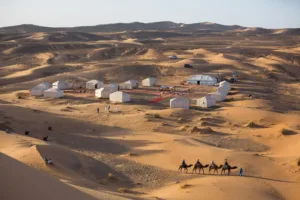
Book 3 days tour from Marrakech to Merzouga, through that trip we will discover some Moroccan best-nown places, contact us now!
Product SKU: MTO-102
Product Brand: Morocco Tours Operator
Product Currency: EUR